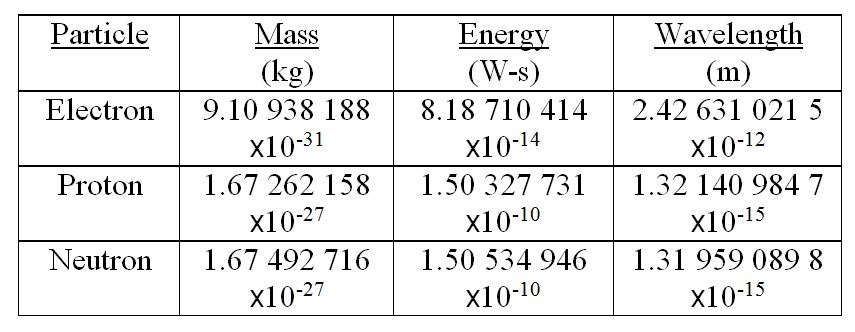Appendix A
Numbers and Physical Constants
The Mass of an Electron
In kilograms an electron’s mass is 9.109 381 88 divided by the number 1 with 31 following zeros.
Writing a small number means dividing by a large number. We could write the electron mass in kilograms as 9.109 381 88/1031, using the slash to indicate division. When we must move the decimal to the right, we count the number of places, and then after the significant figures we write a divisor consisting of 10 with a superscript equal to that number of places.
The usual way to write a very small number is to indicate multiplication by 10 with a negative superscript, as follows: 9.109 381 88x10-31 kg. This makes sense to mathematicians, but it isn’t clear to many other people. As a start toward understanding it, just remember that a negative superscript means a small number. You must put in many leading zeros to make the number small. That means that the number of places for moving the decimal point is counted from just after the first nonzero digit toward the left, when the number is very small. For very large numbers one counts to the right and uses a multiplier instead of a divisor.
The proton mass in kilograms is 1.672 621 58x10–27. The neutron mass is slightly heavier. It is 1.674 927 16x10–27.
Planck's Constant
Planck’s constant is 6.626 068 76 x10–34 joule-seconds, a very small number.
Particle Parameters
The table below contains useful information for calculating the energy it takes to make a subatomic particle, or for estimating how closely two photons must coincide when they interact to materialize as particle and antiparticle.
The table below contains useful information for calculating the energy it takes to make a subatomic particle, or for estimating how closely two photons must coincide when they interact to materialize as particle and antiparticle.
Watt-Seconds and Kilowatt-Hours
We can round the square of the speed of light to 9x1016 m²/s². Dividing that number by 3.6x106 gives 2.5x1010 kilowatt-hours of energy for each kilogram of mass.
Solar Mass
The Sun’s mass is 1.99x1031 kilograms.
The Volume of the Visible Universe
The present volume of the visible universe is the fraction 4/3 times the number π times the cube of the radius, 13 820 million light years. The result is 1031 cubic light years. If you want to calculate the volume in four-dimensional space-time, just multiply twice the number π by the square of the square of the radius in light years. The result is 1.8x1041 quartic light years.
The Precision of the Expansion Rate
The expansion rate must have been set with a precision of one part in the number 10 raised to the 50th power.
The expansion rate must have been set with a precision of one part in the number 10 raised to the 50th power.
